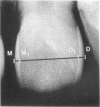Abstract
Enamel thicknesses in 45,X females', their male and female relatives', and population control males' and females' permanent tooth crowns were determined from radiographs. The results showed that the enamel layer in both maxillary first incisors and canines of 45,X females is definitely thinner than that of control males or females. Enamel in control males' and females' teeth was about equal in size. The distance between mesial and distal dentino-enamel junctions or the thickness of "dentin" was similar in 45,X females' and in control females' teeth, but definitely smaller than in control males' teeth. These findings show that in the presence of the second sex-chromosome in the chromosome complement, whether X or Y, there is a definite and equal increase in the amount of enamel. On the other hand, in the presence of the Y chromosome in the chromosome complement, relative to the second X chromosome, there is a definite increase in the thickness of the dentin. The results of earlier studies have indicated a direct growth-promoting effect of the sex chromosomes on tooth growth, and that the effect of X and Y chromosomes is different. The present results suggest that the influence of the X- and Y-chromosome gene(s) on amelogenesis is the same in quantitative terms but different in relation to the determination of the distance between dentino-enamel junctions; the Y chromosome is more effective than the X chromosome in that respect. It is postulated that this size-increasing effect of the Y-chromosome gene(s) might result from its profound effect on cell proliferations.
Full text
PDF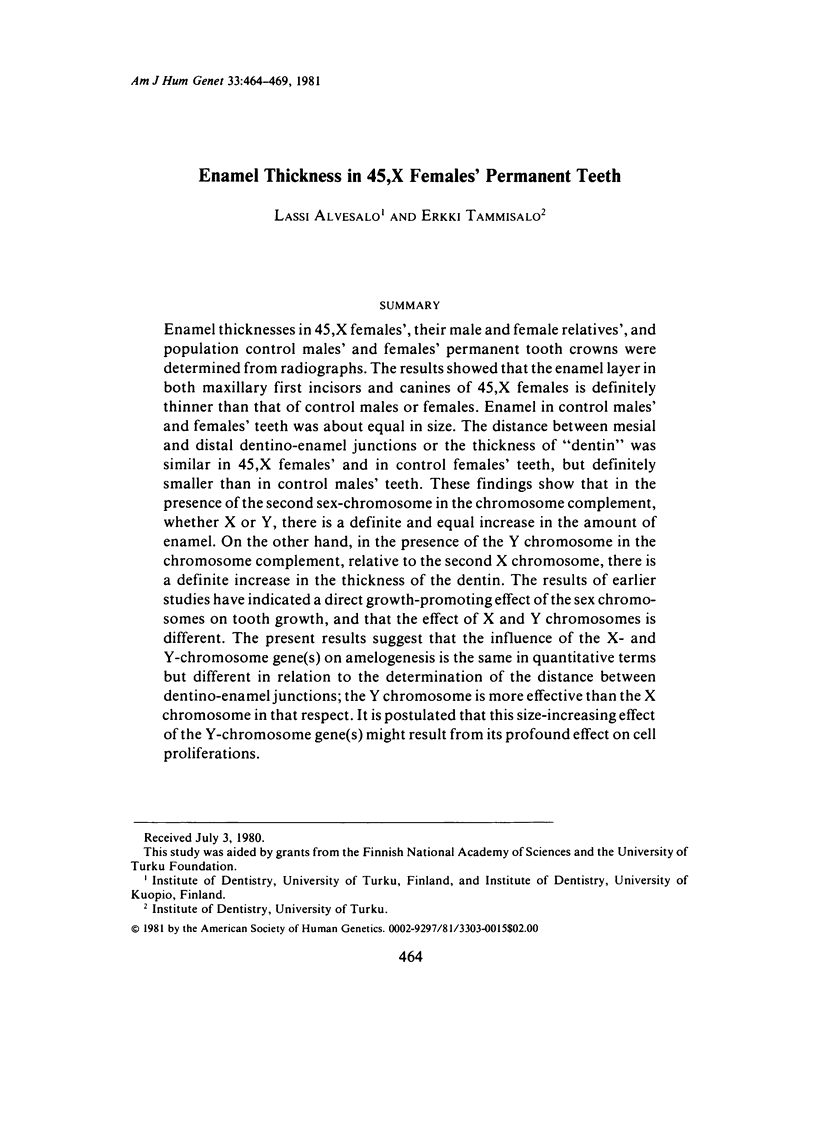
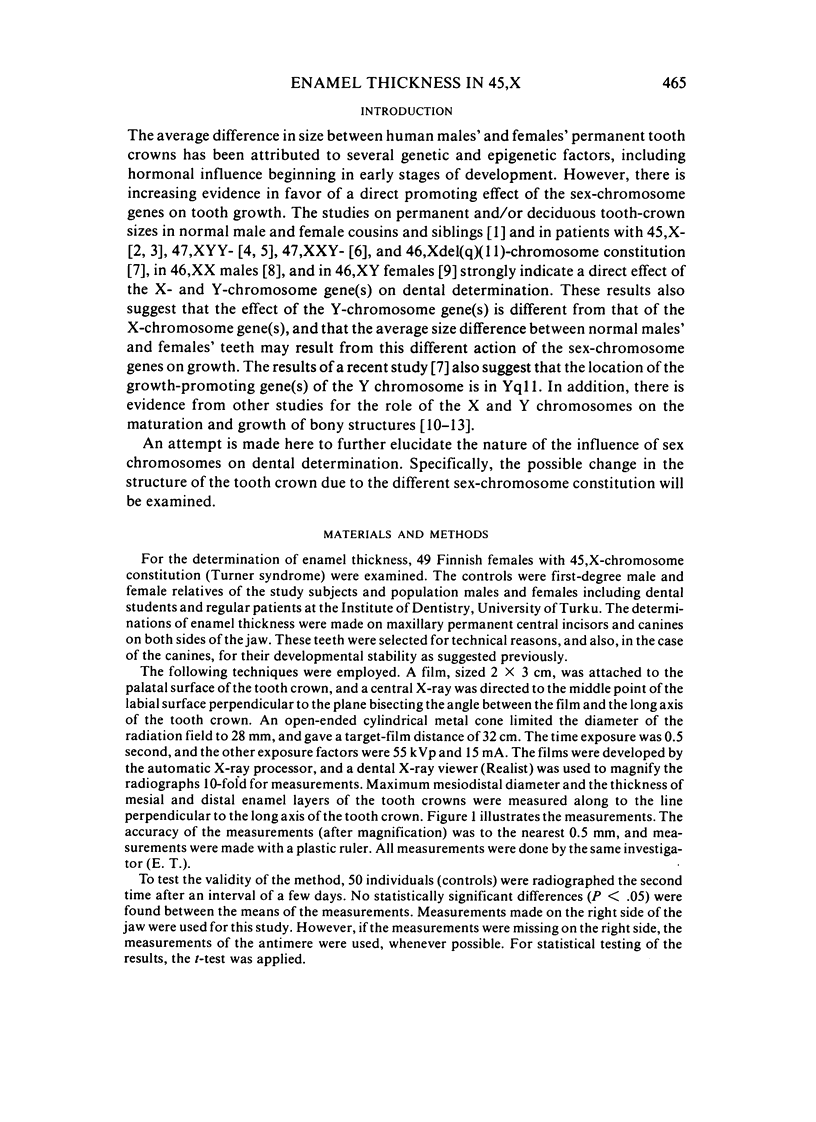
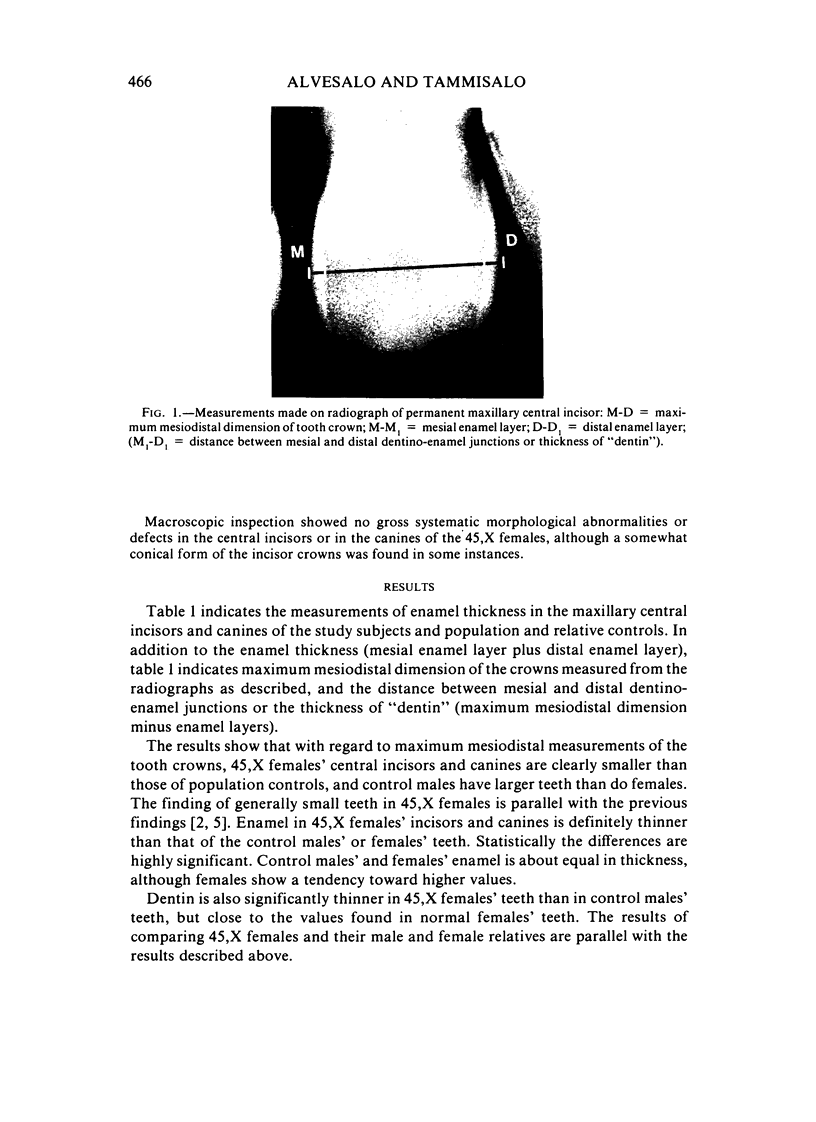
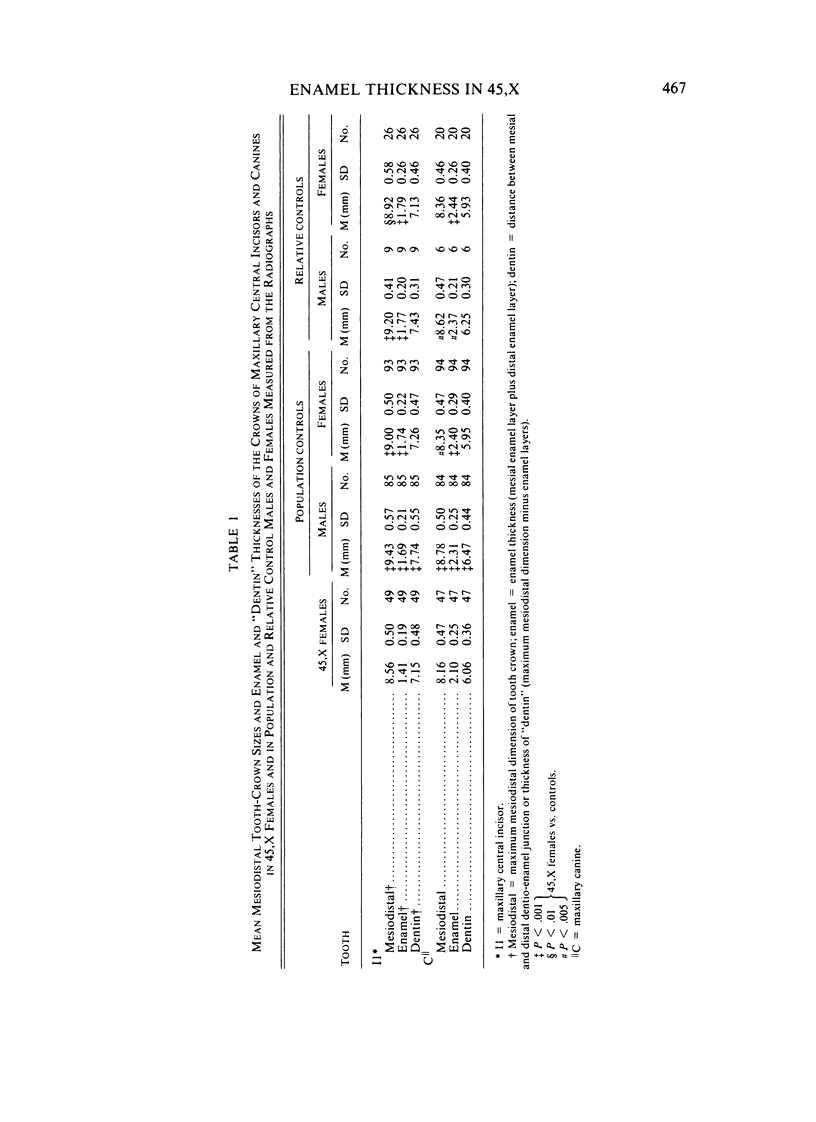
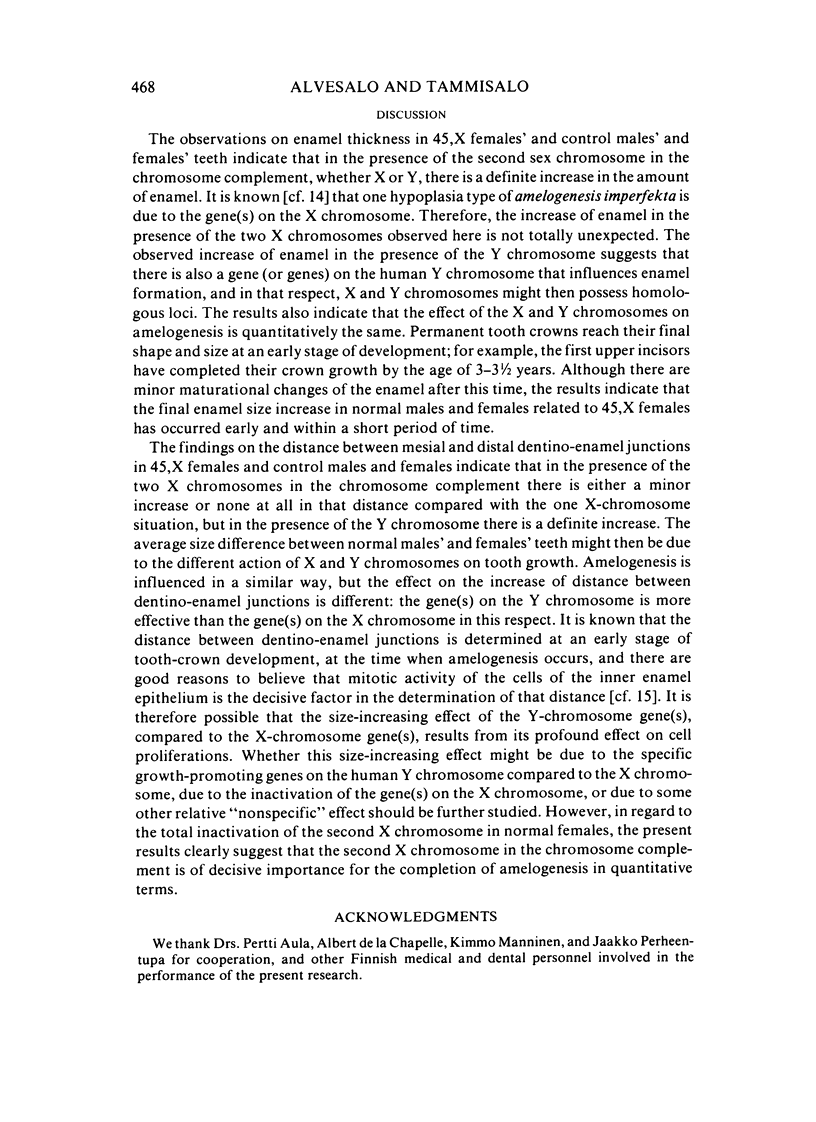
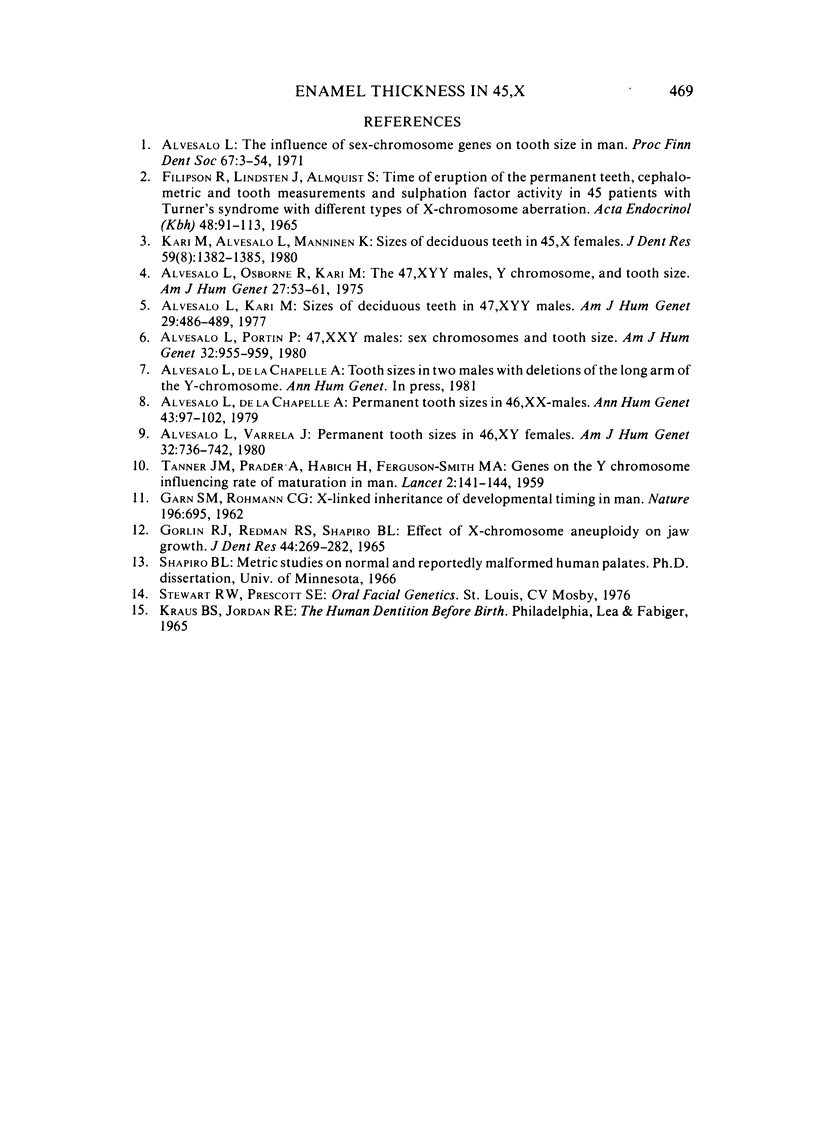
Images in this article
Selected References
These references are in PubMed. This may not be the complete list of references from this article.
- Alvesalo L., Kari M. Sizes of deciduous teeth in 47,XYY males. Am J Hum Genet. 1977 Sep;29(5):486–489. [PMC free article] [PubMed] [Google Scholar]
- Alvesalo L., Osborne R. H., Kari M. The 47,XYY male, Y chromosome, and tooth size. Am J Hum Genet. 1975 Jan;27(1):53–61. [PMC free article] [PubMed] [Google Scholar]
- Alvesalo L., Portin P. 47,XXY males: sex chromosomes and tooth size. Am J Hum Genet. 1980 Nov;32(6):955–959. [PMC free article] [PubMed] [Google Scholar]
- Alvesalo L. The influence of sex-chromosome genes on tooth size in man. A genetic and quantitative study. Suom Hammaslaak Toim. 1971;67(1):3–54. [PubMed] [Google Scholar]
- Alvesalo L., Varrela J. Permanent tooth sizes in 46,XY females. Am J Hum Genet. 1980 Sep;32(5):736–742. [PMC free article] [PubMed] [Google Scholar]
- Alvesalo L., de la Chapelle A. Permanent tooth sizes in 46,XX-males. Ann Hum Genet. 1979 Oct;43(2):97–102. doi: 10.1111/j.1469-1809.1979.tb02001.x. [DOI] [PubMed] [Google Scholar]
- FILIPSSON R., LINDSTEN J., ALMQVIST S. TIME OF ERUPTION OF THE PERMANENT TEETH, CEPHALOMETRIC AND TOOTH MEASUREMENT AND SULPHATION FACTOR ACTIVITY IN 45 PATIENTS WITH TURNER'S SYNDROME WITH DIFFERENT TYPES OF X CHROMOSOME ABERRATIONS. Acta Endocrinol (Copenh) 1965 Jan;48:91–113. doi: 10.1530/acta.0.0480091. [DOI] [PubMed] [Google Scholar]
- GARN S. M., ROHMANN C. G. X-linked inheritance of developmental timing in man. Nature. 1962 Nov 17;196:695–696. doi: 10.1038/196695a0. [DOI] [PubMed] [Google Scholar]
- GORLIN R. J., REDMAN R. S., SHAPIRO B. L. EFFECT OF X-CHROMOSOME ANEUPLOIDY ON JAW GROWTH. J Dent Res. 1965 Jan-Feb;44:SUPPL–SUPPL:282. doi: 10.1177/00220345650440012201. [DOI] [PubMed] [Google Scholar]
- Kari M., Alvesalo L., Manninen K. Sizes of deciduous teeth in 45,X females. J Dent Res. 1980 Aug;59(8):1382–1385. doi: 10.1177/00220345800590080401. [DOI] [PubMed] [Google Scholar]
- TANNER J. M., PRADER A., HABICH H., FERGUSON-SMITH M. A. Genes on the Y chromosome influencing rate of maturation in man: skeletal age studies in children with Klinefelter's (XXY) and Turner's (XO) syndromes. Lancet. 1959 Aug 22;2(7095):141–144. doi: 10.1016/s0140-6736(59)90558-6. [DOI] [PubMed] [Google Scholar]



